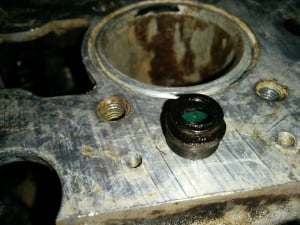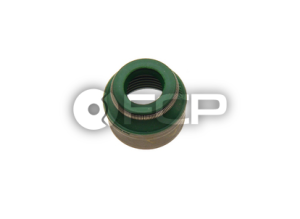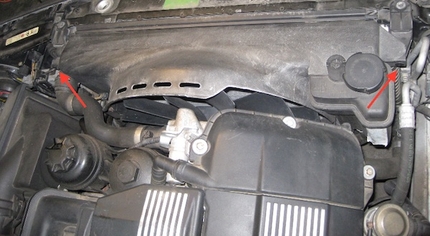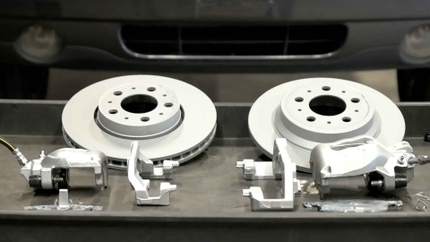Volvos are known for their post-apocalyptic reliability. Ask any 240 owner. But, reliability doesn't mean that they don't age and start to fail, becoming less efficient over time. As with most cars that are above 150,000 miles and beyond, they start to consume higher-than-acceptable amounts of oil. The whiteblock 5-cylinder used in the Volvo 850, S70, and V70 all share a common problem that starts to crop up in their old age.
Symptoms
If your Volvo blows blue smoke under acceleration after idling for a long period of time or immediately after a cold startup, chances are the valve stem seals have begun to fail. If the vehicle blows blue smoke under acceleration all of the time, or consistently smokes at idle, it may be a turbo or piston ring issue, however those failures are much more rare. YouTube user etsemuk created a great video that shows what will happen when valve stem seals have given up the ghost.
What do valve stem seals do?
Looking into the intake ports of a cylinder head, the valve stems are visible. Air and fuel whoosh past these and into the combustion chamber when the engine is running. Above the valve stems are the camshafts, and a nice bath of oil. The camshafts actuate the valves, but the oil must be kept from entering the intake ports and combustion chambers. This is where the valve stem seals come in. They hug the outside of the valve stems and keep oil out.
Over time, these seals perish and become very brittle, losing the grip and seal they once had on the valve stem. When oil seeps past these, it leaks down the stems into the intake ports and can even be accelerated by heightened levels of vacuum. That's why a long idle will cause a huge cloud of smoke if the accelerator is tapped. Long idle = a long period of vacuum in the intake ports.
Replacement
Replacement of these seals is no easy task. It can be performed with the cylinder head in-place, however I wouldn't recommend it for the first-timer. Removing the cylinder head and fully degreasing it is the best way to learn and ensure you do a thorough job. This also affords you the opportunity to lap the valves and install a fresh head gasket to ensure solid compression. The seals pop out using pliers or a special valve stem seal puller, and can be reinstalled carefully with a deep socket that matches the metal rim of each seal. They are held in with a press fit.
With the head off, gaining access to the seals is easy with a valve spring compressor. With each spring compressed, the valve keepers can be snagged with a thin magnet, allowing the springs and valves to be removed.
A clean, resealed cylinder head will add years of enjoyability to your vehicle. Checking a dipstick that reads "full" on an older car gives a sense of satisfaction like none other.













